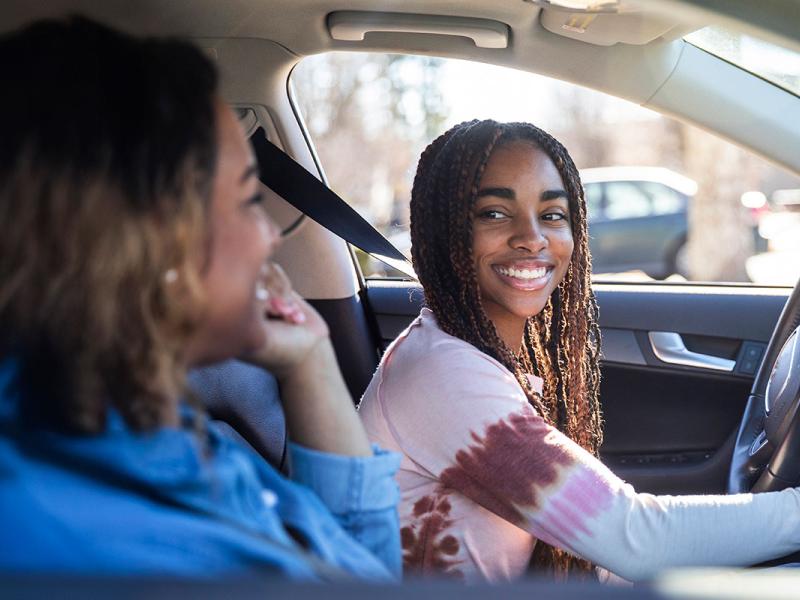Teen driving safety matters
For teens, driving means freedom and independence. But it also comes with serious responsibility and causes concern for parents and caregivers. Teen driving safety is a major issue: according to the National Highway Traffic Safety Administration, car crashes are the leading cause of death for 15 to 18-year-olds in the U.S. Inexperience, peer pressure, risky behavior and still-developing decision-making skills put teen drivers at higher risk. As a result, their fatal crash rate is three times higher than that of drivers age 20 and older.
Each state has its own laws to help keep young drivers safe. Make sure you and your teen know and understand them.
Safety tips for young drivers
Follow these tips to help keep your teen driver safe on the road:
Prepare the vehicle
Each time your teen driver gets behind the wheel, they should:
- Adjust their seat and head restraint properly
- Set mirrors for maximum visibility
- Secure any loose items that could become projectiles in a crash
Always wear a seat belt
Teens wear seat belts less than any other age group. Some think they don’t need to or feel peer pressure from friends. But seat belts save lives. They prevent ejection and lower the risk of death by up to 50%. In most states, seat belt laws require all drivers and passengers to use them. Teach your teen to wear their seat belt, every ride, every time.
Use the 10-3 rule
- Look 10 seconds ahead to spot hazards early.
- Stay at least three seconds behind the vehicle in front of you to give time and space to react.
- Keep scanning. Avoid tunnel vision.
- Stay alert and visible, especially near trucks or in blind spots.
Avoid distractions
Every year, distracted driving causes more than 3,300 deaths. Teens are especially at risk because they’re less experienced and more easily distracted. Distracted driving means doing anything that takes someone’s attention away from the road.
Tips to share with your teen to reduce distractions:
- Texting: Never text and drive. Texting while driving takes your eyes off the road. At 55 mph, studies have shown that’s like driving the length of a football field blindfolded.
- Phone calls:
- Keep your phone out of reach.
- Use “Do Not Disturb” mode.
- If you must answer, use hands-free options.
- Music/audio:
- Set playlists before driving.
- Use autoplay or hands-free controls.
- Navigation:
- Program your GPS before driving.
- Don’t take your eyes off the road to check your GPS. If you’re not sure about directions while driving, pull over in a safe place to check them.
- Eating and drinking:
- Avoid eating or drinking when driving, if possible.
- If you need to, choose easy-to-handle items or ask a passenger to help.
Limit multiple passengers
More passengers mean more risk. The chance of a crash goes up with each extra teen in the car. That’s why Pennsylvania law limits how many teen passengers new drivers can have.
During the first six months after getting a license, drivers can only have one nonfamily teen passenger. After six months, they can have up to three nonfamily teen passengers but only if they haven’t had any crashes or driving violations.
Don’t speed
Speeding is a big reason why teens crash. It’s dangerous, especially when combined with inexperience, distraction, not wearing seat belts or bad weather and road conditions. Teens need to know why speed limits matter. Parents should set a good example and teach their teens to follow speed limits.
Don’t drive under the influence
Driving under the influence (DUI) of alcohol, drugs or some medicines slows reaction times and makes it hard to focus. It’s illegal, dangerous and often fatal. Make sure your teen understands they should:
- Never ride with someone who is impaired.
- Always have a backup plan, like a rideshare, parent or trusted friend.
- Never drink and drive. No exceptions.
For more tips, see Getting Ready to Drive tips from Safe Kids.



